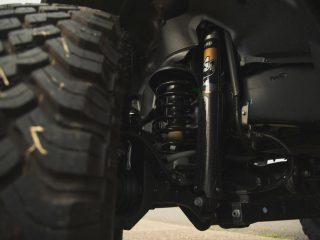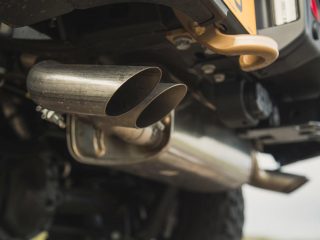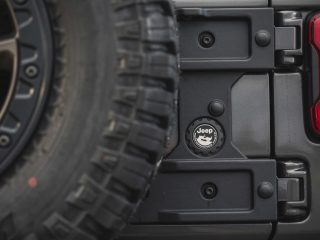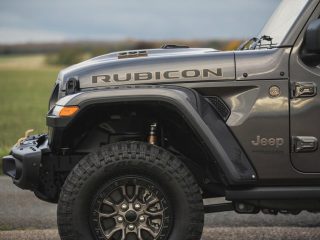Jeep parks a hardcore, V8-powered tank slap bang on the Ford Bronco’s lawn. The shock-and-awe factor is high, but beneath the battle gear is a very authentic and versatile car.
You might well wonder why Jeep chose 2021 to launch its first headbanging, V8-engined Wrangler in more than three decades.
Today’s airwaves brim with debate about how best to reduce our carbon footprints, and Jeep already toes the environmental line to some extent: it currently offers a Wrangler plug-in hybrid, with a four-pot engine and 40 or so kays of electric range, and a Wrangler EV is expected to arrive soon. So surely the whole big-boned V8 thing is just a little passé?
The 392 is quite the showpiece. That mammoth engine is the same naturally aspirated Hemi unit found in the Dodge Challenger R/T Scat Pack, making 350kW and 637Nm. It sounds gravelly and archaic, rather than woofly and smooth like the twin-turbocharged V8s prolific in European performance cars, but it’s seriously bombastic (yes, there’s even a sports exhaust) and exciting and it certainly gets the job done, firing the heavy Rubicon 392 to 100km/h in less than 5.0sec.
Top speed is limited to 160km/h to protect the all-terrain tyres, although in truth the main benefit of the V8 over the standard four- and six-cylinder engines is its throttle response and torque output during recreational crawl-speed off-roading.
The engine is mated to an automatic eight-speed gearbox and, as in any other Rubicon, you have the ability to lock the differentials and disconnect the front anti-roll bar for extra suspension travel on the boulder fields these cars seem to love.
It’s a toy, the 392, but a very serious one, and on country lanes you never quite shake the subliminal desire to suddenly turn hard left, vault the ditch, put a perfectly square-shaped hole in the hedgerow and then go full-throttle across the fields, V8 roaring and the tyres launching rooster-trails of mud and grass in your wake. And I’m sure the car would do just that.
The main difference between a regular Rubicon and the 392 is that – as is apparent when you get near the latter’s monolithic form – the ride height is increased by two inches. This is courtesy of new Fox dampers, which gleam from within the recesses between the tops of the 33-inch tyres and the signature box arches.
The increase improves the Rubicon’s already excellent approach, departure and breakover angles, for even greater off-road dexterity. At the back lurk four functional-looking exhaust tips, which, along with the new wade-friendly bonnet scoop and bronze detailing, mean you’re not going to mistake the 392 for some lesser Wrangler derivative. With its electrically folding canvas roof slid back and all four doors taken off, this is unadulterated Mad Max.






That said, most impressive about the 392 is that which applies to all JL-generation Wranglers. For a body-on-frame, rigid-axle 4×4 that will make light work of truly evil trails, it’s miraculously easy-going on the road. The steering is slow but light and passably accurate, body roll is acceptable, the ride pliant-ish and the gearbox is not only smooth-acting but has neatly tuned shift points.
Admittedly, the 392’s breeze-block proportions mean wind roar is loud at speed, and on greasy B-roads the knobblies mean it will understeer like a pig, with plenty of tread shuffle to spike your heart rate. However, you’ve really got to go looking for this kind of thing, and by virtue of the 392 being a ten-tenths car off-road, you need to treat it like a six-tenths car on road. Otherwise, get a Mercedes-AMG G63.
It’s clearly a fan favourite, the 392: the most extreme, most capable, fastest and most likeable Wrangler. Some statement. The problem is that Jeep is not bringing it to Australia in any official capacity, and so it is a car like the Land Rover Defender 90 or 110 V8 that’s the only viable alternative for now.








